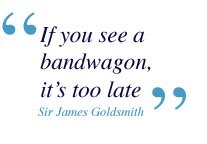Further to my post on hopeless compliance training, I was told that a major financial company, with revenues of $14 billion worldwide, did some interesting diversity training in their London office earlier this month – they took the budget and invited people along to watch the England V Trinidad & Tobago match, with some spicy chicken thrown in! They, like many others, treat much of this stuff as a waste of time, and who can blame them.
At a recent conference on the subject, there was a long list of (I kid you not) Heads of Cohesion & Faith as well as Heads of Diversity, Heads of Inclusion and Heads of Equality. Few would argue that the laws; Equal Pay Act, Sex Discrimination Act, Race Relations Act, Disiability Discrimination Act, Part Time Workers regulations and more recent Employment Equality legislation on sexual orientation, race, religious belief or age, are sensible, but there is a sensible debate to be had about the crude training that attempts to effect behavioural change.
Louise Pendry of Exeter University claims that there’s no evaluative evidence showing that these programmes work. Even worse, many may do more harm than good. Tracie Stewart, a professor at Georgia University, has identified "backlash" or "victim blame", after some courses, where the learners, harbour resentment against other minority groups for the way they are made to feel. Rather than bringing people together, it may be reinforcing differences. Ethnic minorities may become over-sensitive, and doing as the Americans have done, policing it through legal cases, is hardly sensible. The social case may be strong but the business case is weak.
Munira Mirza investigated diversity training for the BBC and uncovered some awful training, including the popular Jane Elliot’s ‘blue eyes/brown eyes’ classroom courses. What was interesting were the comments posted after the broadcast:
When I was about 12 we had a policeman come in to school to talk about racism. He showed us a photo of a white man in police uniform running after a black man in jeans. He asked us what we thought was going on. Everyone- including a black child that he pointedly asked -said that it was a criminal being chased by a policeman. We were then told that we had made a "racist assumption" as actually the black bloke was a plain-clothes police officer. No-one raised the point that we would have probably said the exact same thing if the plain clothes officer had been white and a load of 12 year olds were told that they were racist. How helpful was that?
Hannah, Peterborough'Diversity training' will lead to resentment, simply because grown men and women don't like being told how to behave. The whole business is superfluous. I suggest a straightforward mandatory clause attached to every employment contract in the country, reading 'You will treat all colleagues fairly and kindly'
al, UK You cannot over-estimate the damage to race relations that "diversity awareness" training is causing in this country. It's having the opposite effect to that intended, causing divisions, resentment, and an increase in judgements based on race, where previously such things were actually quite rare. How do I know this? I was involved in putting together a diversity "toolkit" for a government department, and saw first-hand the effect it had as it was rammed down the throats of the staff.
Michael, Brighton UKThis is an example of companies trying to see if two wrongs really do make a right. I don't doubt that some people are racist in the workplace, but punishing many because of the actions of a few is ludicrous.
Andy Thorley, Crewe, Cheshire











